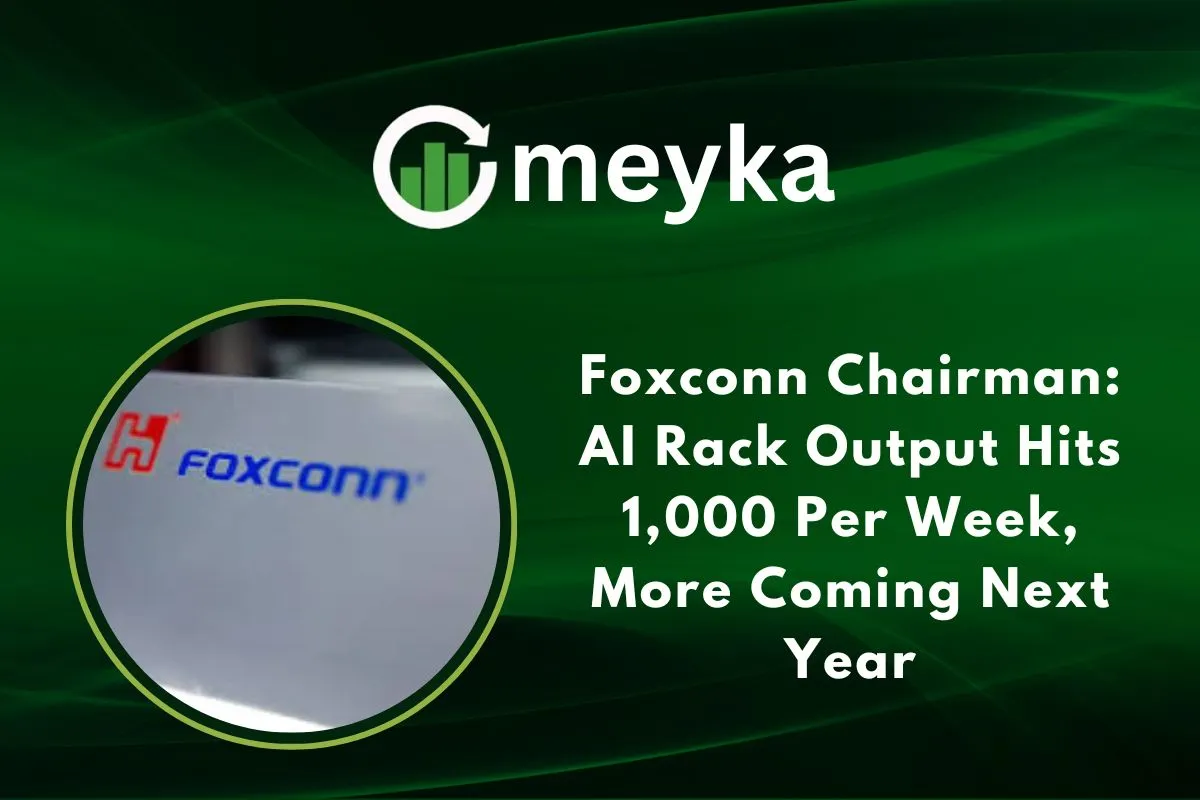Foxconn Chairman: AI Rack Output Hits 1,000 Per Week, More Coming Next Year
At its recent tech-day event, Foxconn Chairman Young Liu dropped a big news: Foxconn now builds 1,000 AI racks per week. That scale is huge. These racks are server systems designed to power artificial intelligence workloads. For a company best known for assembling iPhones, this marks a big shift. Liu also said they plan to raise production even more in 2026, as demand for AI data center gear soars. We are witnessing Foxconn stepping into a new era, one where its future growth could come more from AI than from consumer electronics.
Foxconn’s AI Rack Production Milestone
Foxconn now reportedly produces 1,000 AI racks every single week. These racks are not ordinary servers; they are built for high-performance AI tasks. They hold powerful GPUs, networking cables, and cooling systems. Foxconn’s chairman made this announcement in front of major partners like Nvidia and even OpenAI. Reaching this level shows how serious Foxconn is about scaling up its AI infrastructure business.
Plans for Expansion Next Year
Looking ahead, Foxconn isn’t slowing down. Liu mentioned that next year they expect to increase this output further. They plan to invest US$23 billion annually in AI. In parallel, Foxconn is building out data‑center capacity. Its subsidiary Visionbay.ai is working on a 27 MW data center in Taiwan that will use Nvidia’s latest GB300 chips. All of this signals that Foxconn is preparing for a major surge in AI infrastructure demand.
The Role of AI in Foxconn’s Strategy
AI is no longer just a side business for Foxconn; it’s central to its long-term plan. The company is integrating AI production with its three “smart” platforms: smart manufacturing, smart EVs, and smart cities. For example, Foxconn is deploying Nvidia RTX PRO Servers in its factories to run simulations, train robots, and optimize supply chains. This mix of manufacturing and AI gives Foxconn a competitive edge. We’re seeing a company that isn’t just assembling hardware, it’s building the infrastructure to support the next wave of intelligent systems.
Market Implications and Demand Drivers
So, why is Foxconn going all-in on AI racks? Because the demand for AI infrastructure is exploding. Big cloud providers and hyperscalers are investing heavily in data centers to run generative AI and large models. Foxconn is well-positioned: it claims more than 40% share of the global AI server market. In Q2 2025, its cloud & networking division revenue (which includes AI servers) actually surpassed its consumer electronics revenue. That’s a big signal: Foxconn’s future may come more from AI infrastructure than from phones.
Challenges and Considerations
Still, scaling to thousands of AI racks isn’t easy. There are real hurdles. First, supply chain risks, AI chips are in high demand, and shortages could disrupt production. Foxconn’s own chairman has admitted as much. Second, there’s stiff competition. Other hardware makers and data‑center integrators are also pushing hard into the AI space. Third, Foxconn needs to make sure that quality holds up even as it ramps up volume. Mass-producing high-end AI racks is not trivial.
Strategic Partnerships and Infrastructure
Foxconn is not going it alone. It has formed a strategic alliance with TECO Electric & Machinery, swapping shares to jointly build modular data centers. This partnership bridges Foxconn’s AI rack strength with TECO’s infrastructure know-how. On top of that, Foxconn is working with OpenAI to co-design hardware, from rack layouts to networking and power systems. They plan to make these in the U.S., boosting Foxconn’s American footprint. There’s also a big energy‑efficiency push: Foxconn and Nvidia are deploying an 800 VDC power architecture at their AI factory project to make operations greener.
Innovative Moves: Beyond Just Racks
Foxconn is injecting innovation in more than just volume. At COMPUTEX 2025, they revealed that their AI Factory in Taiwan will run on Nvidia’s Blackwell and GB300 platforms. Also, they are planning to run humanoid robots in their factories, robots that will help build these AI servers. If successful, this could massively boost speed and efficiency.
Conclusion
Foxconn is making a bold bet. By hitting 1,000 AI racks a week and planning to scale higher, it is carving out a powerful place in the AI infrastructure boom. Its deep investments, strong partnerships, and push for innovation show that this isn’t just a trend; it’s the future. For us watching the tech world, Foxconn’s journey from iPhone assembler to AI backbone is fascinating. As AI demand continues to skyrocket, Foxconn may well emerge as one of the pillars holding up the next generation of computing.
Disclaimer:
The content shared by Meyka AI PTY LTD is solely for research and informational purposes. Meyka is not a financial advisory service, and the information provided should not be considered investment or trading advice.






